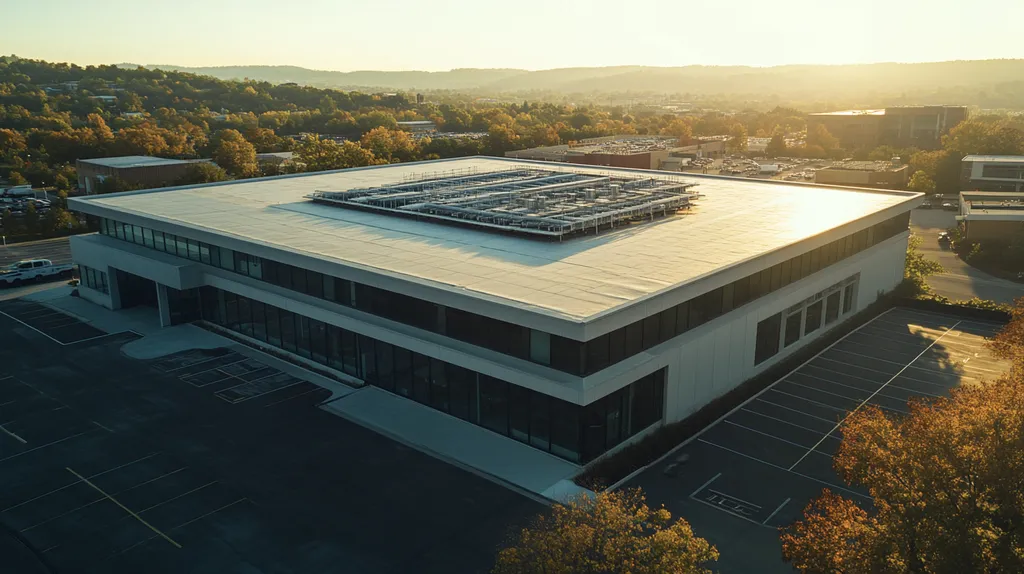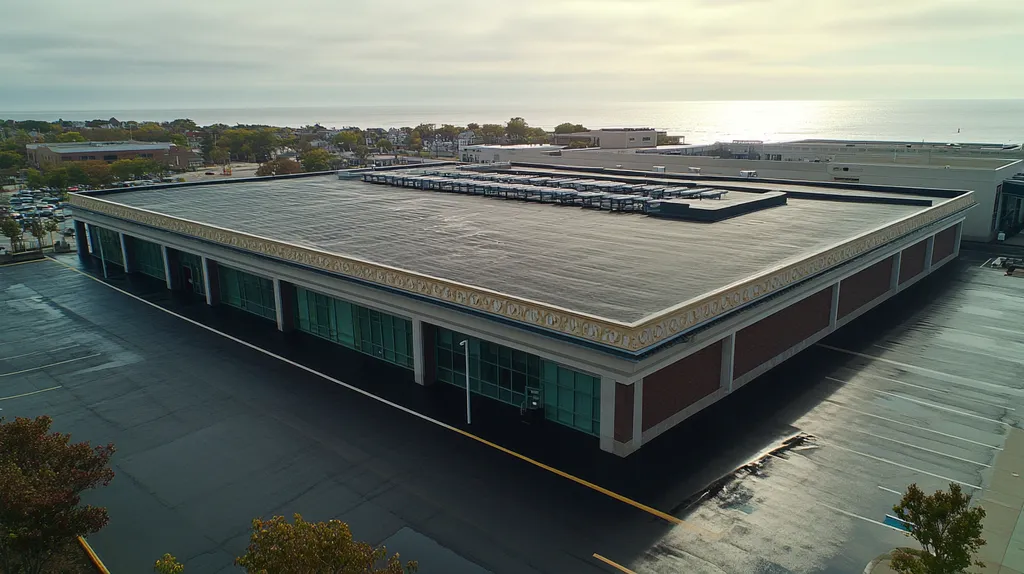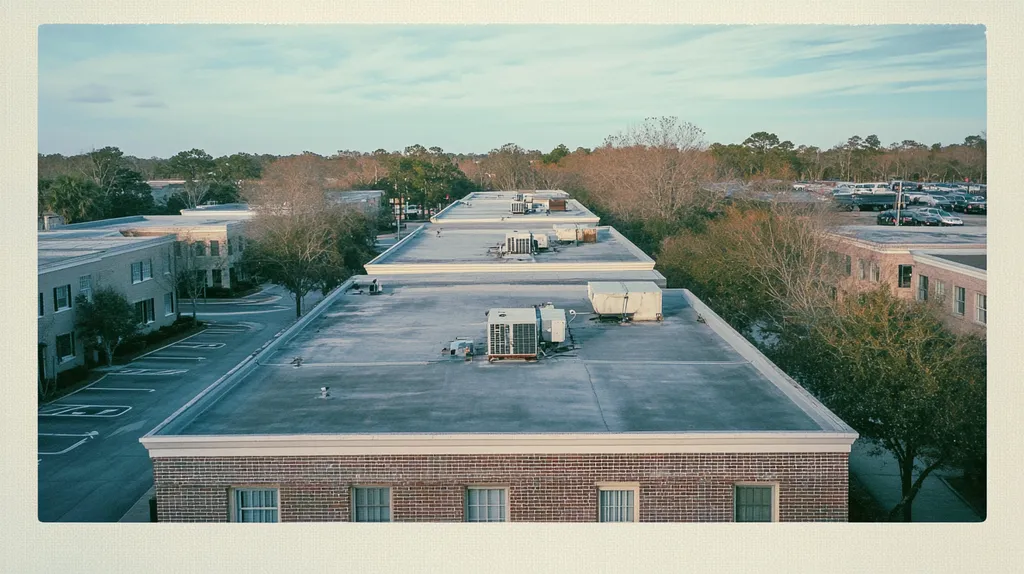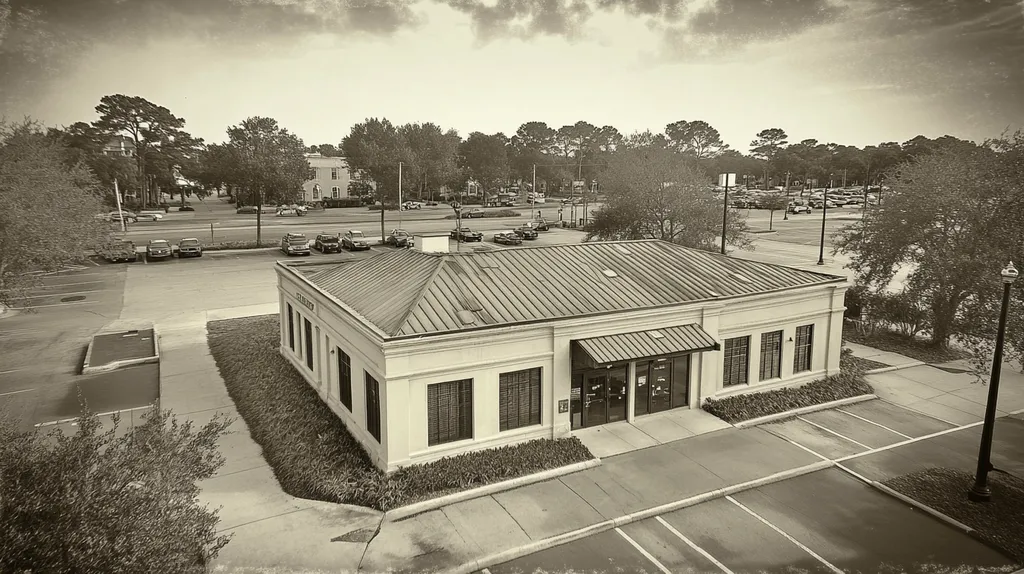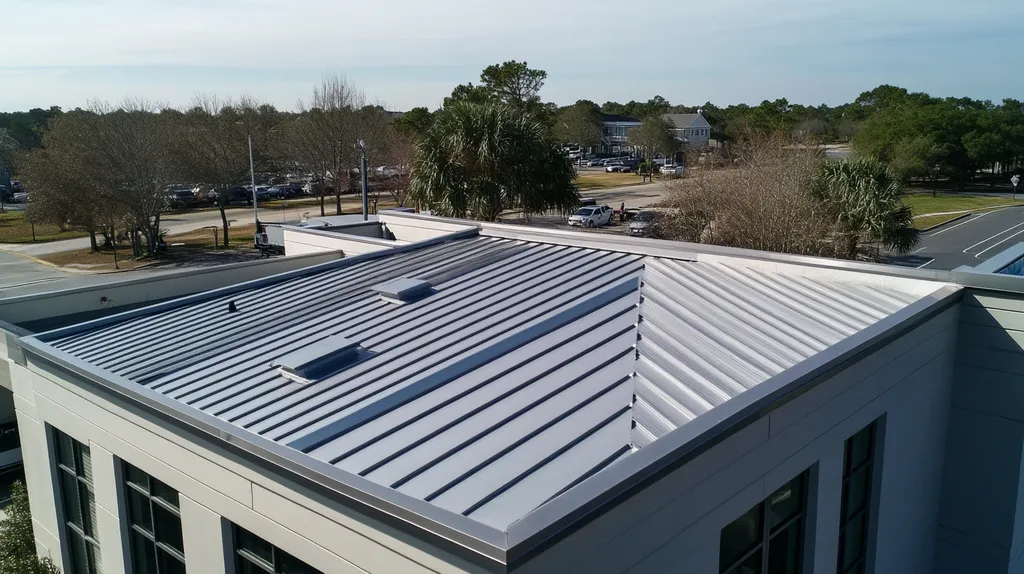Welcome to today’s Battle Royale featuring two roofing heavyweights: “Polyurethane Coatings” in the east corner versus “Silicone Coatings” in the west!
Tonight’s showdown pits these contenders against each other across six punishing rounds designed to test every aspect of their performance for the Durability of Industrial Roof Coatings.
At stake? Millions in potential costs, decades of building protection, and the critical performance demands of modern commercial and industrial facilities.
Our professional judging panel will evaluate each round on technical merit, real-world performance, and value delivery. After all six rounds, we’ll declare our ultimate champion.
Ladies and gentlemen, facility managers and building owners… it’s time to rumble!
ROUND 1: INITIAL COSTS & INSTALLATION
In today’s competitive industrial market, selecting the right roof coating system directly impacts both immediate expenses and long-term facility protection. The elastomeric coatings segment dominates with a 67.1% market share, highlighting the critical importance of making informed coating decisions. Property managers must carefully weigh initial investments against installation requirements to ensure optimal facility protection. (source: Grand View Research)
Material Expenses
Material costs represent a significant portion of any roof coating project’s budget. While polyurethane coatings typically command premium pricing, their advanced chemical properties and superior durability often justify the investment.
Silicone coatings generally cost 15-25% less per square foot than their polyurethane counterparts. This lower entry point makes silicone an attractive option for projects with tight budgets or shorter-term protection needs.
When factoring in coverage rates and mil thickness requirements, silicone coatings often require less material to achieve desired protection levels. This efficiency in material usage further enhances their cost-effectiveness.
For material expenses, the “ADVANTAGE” goes to silicone coatings.
Installation Complexity
Installation procedures significantly impact project success and timeline adherence. Polyurethane systems typically require multiple components and precise mixing ratios, demanding specialized applicator training and equipment.
Silicone coatings offer single-component simplicity, reducing application complexity and potential mixing errors. Their forgiving nature allows for easier application across varying substrate conditions.
Weather conditions play a crucial role in installation success. Polyurethane applications require strict temperature and humidity controls, while silicone demonstrates greater tolerance to environmental variables.
For installation complexity, the “ADVANTAGE” goes to silicone coatings.
Project Timeline
Project duration directly affects facility operations and bottom-line costs. Silicone coatings typically allow for single-day application and rapid return-to-service times, minimizing business disruption.
Polyurethane systems often require multiple days for proper installation and curing. Their layered application approach necessitates specific cure times between coats, extending overall project duration.
Weather delays impact polyurethane installations more severely due to their stricter application requirements. Silicone’s moisture-tolerant properties allow for more flexible scheduling and fewer weather-related setbacks.
For project timeline, the “ADVANTAGE” goes to silicone coatings.
ROUND 1 WINNER: SILICONE COATINGS
ROUND 2: DURABILITY & LIFESPAN
When protecting industrial facilities, the durability battle between roof coatings directly impacts operational continuity and asset preservation. The elastomeric coatings segment commands 67.1% of the market share, with performance and energy efficiency driving adoption across commercial and industrial applications. Understanding the critical differences in weather resistance, UV stability, and maintenance requirements helps facility managers make decisions that safeguard their operations for years to come. (source: Grand View Research)
Weather Resistance
Weather resistance determines how effectively a coating system protects against rain, snow, and temperature fluctuations. Polyurethane coatings create an exceptionally dense barrier that prevents water infiltration while maintaining structural integrity through freeze-thaw cycles.
These coatings demonstrate superior impact resistance and maintain their protective properties even under extreme temperature variations. Their molecular structure provides outstanding resistance to chemical exposure and environmental pollutants.
Silicone coatings excel at resisting ponding water and offer good initial weather protection. However, they can become more susceptible to physical damage over time, particularly in areas with frequent precipitation or extreme temperature swings.
For weather resistance, the “ADVANTAGE” goes to polyurethane coatings.
UV Stability
UV radiation poses a constant threat to roof coating integrity, potentially leading to material breakdown and color degradation. Polyurethane coatings incorporate advanced UV inhibitors that maintain surface stability and reflectivity over extended periods.
These systems resist chalking and maintain their protective properties even after years of sun exposure. Their molecular composition actively prevents UV-induced degradation, preserving both functionality and appearance.
While silicone coatings offer initial UV resistance, they typically show more significant signs of weathering over time. Their surface can become increasingly chalky, potentially compromising water resistance and overall performance.
For UV stability, the “ADVANTAGE” goes to polyurethane coatings.
Maintenance Requirements
Regular maintenance impacts both long-term performance and facility operating costs. Polyurethane coatings typically require minimal ongoing maintenance due to their superior chemical bonding and resistance to environmental factors.
When repairs are needed, polyurethane systems demand precise application procedures and specific materials. This complexity can increase repair costs but ensures consistent protection across the entire roof surface.
Silicone coatings offer simpler repair procedures but may require more frequent attention, especially in high-traffic areas. Their softer surface makes them more susceptible to mechanical damage and may necessitate more regular maintenance interventions.
For maintenance requirements, the “ADVANTAGE” goes to polyurethane coatings.
ROUND 2 WINNER: POLYURETHANE COATINGS
ROUND 3: PERFORMANCE FACTORS
The performance demands on industrial roof coatings continue to intensify as weather patterns become more extreme and energy efficiency requirements grow stricter. With cool roof coatings now capable of keeping surfaces 25°C to 35°C cooler than traditional materials, selecting the right coating system directly impacts both protection and operating costs. (source: Grand View Research)
Weather Resistance
Weather resistance represents a coating’s ability to maintain its protective properties under diverse environmental conditions. Temperature fluctuations, precipitation, and humidity changes constantly test coating integrity and adhesion.
Polyurethane coatings create an exceptionally dense protective barrier that resists moisture penetration while maintaining flexibility through thermal cycling. Their advanced chemical structure provides superior resistance to environmental pollutants and acid rain.
Silicone coatings demonstrate excellent initial weather resistance and particularly excel at handling ponding water conditions. However, they can become more vulnerable to physical damage over time, especially in regions with frequent precipitation or dramatic temperature swings.
For weather resistance, the “ADVANTAGE” goes to polyurethane coatings.
Impact Resistance
Impact resistance directly affects a coating’s ability to withstand physical stress from maintenance traffic, falling objects, and equipment installation. This property becomes crucial for facilities requiring frequent roof access.
Polyurethane coatings deliver superior impact resistance through their unique molecular structure. Their tough yet flexible nature allows them to absorb and distribute impact forces without compromising the protective barrier.
Silicone coatings typically offer lower impact resistance due to their softer composition. This characteristic makes them more susceptible to punctures and tears, particularly in high-traffic areas or regions prone to hail.
For impact resistance, the “ADVANTAGE” goes to polyurethane coatings.
Longevity
Coating longevity directly influences facility maintenance costs and replacement cycles. Extended service life reduces both direct material expenses and indirect costs from business disruption during recoating.
Polyurethane systems typically maintain their protective properties for 15-20 years when properly installed and maintained. Their superior chemical resistance and structural stability contribute to this extended service life.
Silicone coatings generally require replacement or significant maintenance within 10-15 years. While they provide excellent initial protection, their physical properties can degrade more rapidly, especially in challenging environments.
For longevity, the “ADVANTAGE” goes to polyurethane coatings.
ROUND 3 WINNER: Polyurethane Coatings
ROUND 4: MAINTENANCE REQUIREMENTS
In the demanding world of industrial roofing, maintenance requirements can make or break a coating system’s long-term performance. With facility downtime costing an average of $5,000 per hour, choosing a coating with optimal maintenance characteristics directly impacts operational efficiency and bottom-line costs.
Regular Inspection Requirements
Polyurethane coatings demand thorough bi-annual inspections focusing on seams, penetrations, and high-traffic areas. Their complex chemical structure requires specialized knowledge to properly assess potential issues and determine appropriate repair strategies.
These coatings demonstrate superior impact resistance and can handle significant foot traffic during maintenance activities. Urethane roof coatings excel in strength, durability, and adhesion, making them particularly resilient during inspection and maintenance procedures. (source: American WeatherStar)
Silicone coatings typically require annual inspections, with a simpler assessment process due to their uniform surface characteristics. Their self-cleaning properties and resistance to biological growth reduce the complexity of inspection procedures.
For regular inspection requirements, the “ADVANTAGE” goes to silicone coatings.
Repair Procedures
Polyurethane coating repairs require strict adherence to manufacturer specifications regarding surface preparation, material mixing, and application conditions. These precise requirements often necessitate specialized contractor expertise and equipment.
The complexity of polyurethane repair procedures can extend project timelines and increase labor costs. However, properly executed repairs integrate seamlessly with existing coating layers, maintaining system integrity.
Silicone coatings offer significantly simpler repair procedures, with excellent adhesion to existing silicone surfaces. Their single-component nature eliminates mixing errors and reduces application complexity.
For repair procedures, the “ADVANTAGE” goes to silicone coatings.
Long-term Maintenance Costs
Polyurethane systems typically incur higher maintenance costs due to their complex repair requirements and the need for specialized contractors. However, their superior durability often means fewer repairs are needed over the system’s lifetime.
These coatings maintain their physical properties longer, potentially reducing the frequency of major maintenance interventions. Their resistance to environmental degradation helps preserve protective capabilities with minimal intervention.
Silicone coatings generally require more frequent maintenance interventions but at lower cost per repair. Their simpler maintenance procedures and wider contractor availability help control long-term maintenance expenses.
For long-term maintenance costs, the “ADVANTAGE” goes to silicone coatings.
ROUND 4 WINNER: Silicone Coatings
ROUND 5: SUSTAINABILITY CREDENTIALS
In today’s environmentally conscious market, sustainable roofing solutions have become a critical differentiator for facility managers. The elastomeric coatings segment dominates with 67.1% market share, driven largely by demands for energy efficiency and environmental responsibility in commercial and industrial applications. Property managers must carefully evaluate coating sustainability metrics to meet both environmental goals and operational requirements. (source: Grand View Research)
Material Composition
Polyurethane coatings utilize advanced polymer technology but rely heavily on petroleum-based raw materials. Their production process requires significant energy input and generates more greenhouse gas emissions compared to alternative solutions.
These coatings often contain higher levels of volatile organic compounds (VOCs), requiring special handling during application. However, newer formulations are beginning to incorporate renewable resources and bio-based materials.
Silicone coatings derive primarily from silica, an abundant natural resource. Their production generates fewer emissions and requires less energy input, while their low-VOC formulations create safer application conditions.
For material composition, the “ADVANTAGE” goes to silicone coatings.
Energy Efficiency
Polyurethane coatings demonstrate excellent thermal resistance properties. Their dense molecular structure helps maintain consistent interior temperatures, reducing heating and cooling demands throughout the year.
These systems maintain their reflective properties longer than many alternatives, providing sustained energy savings. Their resistance to degradation ensures consistent thermal performance over time.
Silicone coatings achieve higher initial solar reflectance values but may experience more rapid degradation of these properties. Their natural resistance to UV radiation helps maintain reflectivity, though not as consistently as polyurethane systems.
For energy efficiency, the “ADVANTAGE” goes to polyurethane coatings.
Environmental Impact
Polyurethane coatings present challenges for environmental sustainability due to their limited recyclability. Their complex chemical structure makes them difficult to process at end-of-life, often resulting in landfill disposal.
These systems require more frequent complete replacement rather than recoating, generating additional waste. Their removal process can be energy-intensive and may release harmful compounds.
Silicone coatings offer better environmental compatibility through simpler recoating processes and lower waste generation. Their inert nature reduces environmental impact during removal and disposal, while many manufacturers now offer recycling programs.
For environmental impact, the “ADVANTAGE” goes to silicone coatings.
ROUND 5 WINNER: SILICONE COATINGS
ROUND 6: SPECIALIZED APPLICATIONS
Industrial facilities face increasingly complex operational demands that put extraordinary stress on roofing systems. From chemical processing plants dealing with corrosive materials to cold storage facilities experiencing extreme temperature fluctuations, specialized applications require carefully matched coating solutions. Making an uninformed choice can lead to premature system failure, costly repairs, and significant operational disruptions.
Chemical Resistance
Industrial environments frequently expose roofing systems to harsh chemicals, oils, and solvents that can rapidly degrade standard coating materials. Understanding a coating’s chemical resistance properties is crucial for maintaining long-term roof integrity and preventing costly failures.
Polyurethane coatings demonstrate exceptional resistance to industrial chemicals, oils, and solvents. When properly applied, they create a dense molecular structure that actively resists chemical penetration and maintains its protective properties even under sustained exposure.
Silicone coatings offer moderate chemical resistance but can be more susceptible to degradation from prolonged exposure to certain industrial chemicals. Their molecular structure may break down more quickly when regularly exposed to harsh solvents or petrochemicals.
For chemical resistance, the “ADVANTAGE” goes to polyurethane coatings.
Temperature Stability
Extreme temperature variations create significant stress on roofing systems, particularly in facilities with specialized heating or cooling requirements. The coating’s ability to maintain its protective properties across wide temperature ranges directly impacts system longevity.
Polyurethane coatings excel at maintaining their physical properties across extreme temperature ranges. Their advanced chemical structure allows them to remain flexible in cold conditions while resisting softening or degradation in high temperatures.
Silicone coatings perform well in high temperatures but can become brittle in extreme cold. This temperature-related behavior change may lead to cracking or adhesion issues in facilities experiencing wide temperature swings.
For temperature stability, the “ADVANTAGE” goes to polyurethane coatings.
Impact and Traffic Resistance
Many industrial facilities require frequent roof access for equipment maintenance or HVAC servicing. The coating’s ability to withstand regular foot traffic and mechanical impact becomes crucial for maintaining long-term protection.
Polyurethane coatings demonstrate superior impact resistance and durability under heavy traffic conditions. Their excellent strength and adhesion properties make them particularly resilient during maintenance activities, while their ability to handle thermal movement prevents damage from structural stress. (source: American WeatherStar)
Silicone coatings typically show lower resistance to mechanical stress and can be more easily damaged by maintenance traffic. Their softer surface makes them more susceptible to punctures and tears from dropped tools or equipment.
For impact and traffic resistance, the “ADVANTAGE” goes to polyurethane coatings.
ROUND 6 WINNER: POLYURETHANE COATINGS
AND THE WINNER IS…
After six punishing rounds of technical warfare, our championship match ends in a split decision! With three rounds each, both POLYURETHANE and SILICONE COATINGS prove they’re true heavyweights in the industrial roofing arena.
Polyurethane dominated the durability, performance, and specialized application rounds with its superior chemical resistance, impact strength, and extraordinary longevity under extreme conditions. When maximum protection and resilience are required, polyurethane stands tall as the undisputed champion.
Silicone claimed decisive victories in initial costs, maintenance, and sustainability rounds, showcasing its cost-effectiveness, simpler installation, and environmental benefits. For projects where budget constraints or rapid deployment are critical, silicone delivers a powerful combination of value and performance.
But remember, facility managers and building owners: Every structure faces unique challenges. Local climate conditions, regulatory requirements, and specific building characteristics can dramatically impact coating performance. This analysis provides general guidance, but cannot account for all variables. Always consult qualified roofing professionals who can evaluate your specific situation before making your final selection.
In the high-stakes world of industrial roofing, there’s no single “undisputed champion.” The true victory comes from matching your facility’s specific requirements with the right contender’s strengths. Choose wisely – millions in protection and performance hang in the balance!
FREQUENTLY ASKED QUESTIONS
Q. What are the initial costs of commercial roof coatings?
A. The initial costs depend on material choice and installation complexity. Polyurethane coatings are premium-priced while silicone coatings are often 15-25% cheaper. Consider that silicone coatings may require less material for adequate protection, impacting the overall budget. Weight all factors to ensure optimal facility protection.
Q. How do durability and lifespan vary in industrial roof coatings?
A. Durability significantly influences the lifespan of roof coatings. Polyurethane typically lasts 15-20 years due to its impressive weather resistance and minimal maintenance needs. In contrast, silicone coatings generally need replacement sooner, around 10-15 years, especially in challenging environments.
Q. Which commercial roof coating performs better in extreme weather?
A. Polyurethane coatings excel in extreme weather conditions due to their dense barrier and superior impact resistance. They maintain their protective properties despite temperature fluctuations. While silicone coatings manage ponding water well, they may suffer damage over time in severe weather.
Q. What are the maintenance requirements for commercial roof coatings?
A. Maintenance needs differ significantly. Polyurethane coatings require comprehensive bi-annual inspections focusing on specific areas, demanding particular expertise. Conversely, silicone coatings allow for simpler annual inspections and repairs. Their self-cleaning properties lessen inspection complexity, making them more user-friendly.
Q. How sustainable are polyurethane and silicone coatings?
A. Sustainability varies between the two. Silicone coatings are made from abundant natural resources, generating fewer emissions and offering lower environmental impact. Polyurethane, while efficient in thermal performance, often requires more energy for production and has limited recyclability.
Q. Can industrial roof coatings resist chemicals effectively?
A. Polyurethane coatings are designed to resist industrial chemicals, oils, and solvents effectively. They create a protective barrier that maintains structural integrity under exposure. Silicone coatings offer moderate resistance but may break down under harsh chemical conditions, making them less suitable for some environments.
Q. What should be considered for specialized applications in coatings?
A. Specialized applications require coatings to withstand unique stresses like extreme temperatures or chemical exposure. Polyurethane offers excellent temperature stability and impact resistance, making it ideal for high-demand environments. Silicone coatings may not maintain stability in extreme cold, potentially leading to failure.

